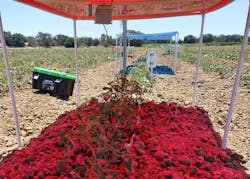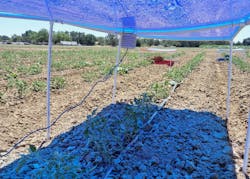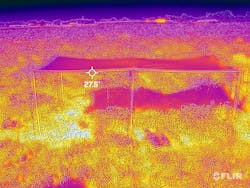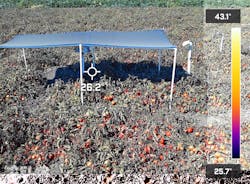Sustainably producing food, clean energy is possible with light
Drawing on inspiration by a challenge to provide food for 10 billion people worldwide by 2050, a team at the University of California Davis (UC Davis) is going unconventional in their approach to growing food and developing clean energy on the same lands, ultimately boosting our climate, land efficiencies, and farms’ resilience.
“I believe we need transformative, rather than incremental, solutions to achieve these things,” says Majdi Abou Najm, an associate professor of Soil Biophysics in the UC Davis Department of Land, Air, and Water Resources and a fellow at the UC Davis Institute of the Environment. He worked alongside Matteo Camporese, an associate professor in the Civil, Environmental, and Agricultural Engineering Department at the University of Padova (Italy). “Thinking outside the box, we recognized that in a hotter and drier planet, light is perhaps the only resource we can sustainably harvest.”
He says the team’s findings—published in Earth’s Future—could prompt a wide range of possibilities, “particularly for food-energy co-generation, which boosts the efficiencies of our lands and gives resilience to our farmers.”
The researchers are trying to better understand how water, soil, plants, and climate respond to different light inputs. Among their goals is to introduce solar radiation as a resource rather than a classic boundary condition in agriculture, and to exploit agrivoltaics, a process in which crops are grown under solar panels using less water. Najm says optimizing light as a resource maximizes its utility, which can be divided between photosynthesis—the production of biomass, thus food—and energy production, the heat or kilowatt hours via photovoltaic panels.
“Our model is a door opener,” Najm says. “It shows the potential benefits of a transformative approach in the way we treat solar radiation.”
The team developed a photosynthesis and transpiration model that accounts for different light spectra. Najm and Camporese found that the red part of the light spectrum is more efficient for plant photosynthesis and water use, while the blue could be used for solar energy production.“Our current and future steps include the scaling of this model from a leaf to a tree to a field or a landscape, and the validation with different crops, soils, and climates,” Najm says.
This will aid the integration of food and energy production, which Najm and Camporese call food-energy co-generation.
“Soil and water are two very precious and limited resources,” Najm says. “We need to ensure their sustainability while satisfying our growing demands for water, food, and energy. This research supports those aspirations and provides a new way to boost an integration between water, energy, and food or agricultural systems.”
The researchers plan to develop a decision support tool that can advise farmers and growers on best practices and configurations in agrivoltaics, which can ultimately boost and improve land efficiency and build farmers’ resilience.
About the Author
Justine Murphy
Multimedia Director, Digital Infrastructure
Justine Murphy is the multimedia director for Endeavor Business Media's Digital Infrastructure Group. She is a multiple award-winning writer and editor with more 20 years of experience in newspaper publishing as well as public relations, marketing, and communications. For nearly 10 years, she has covered all facets of the optics and photonics industry as an editor, writer, web news anchor, and podcast host for an internationally reaching magazine publishing company. Her work has earned accolades from the New England Press Association as well as the SIIA/Jesse H. Neal Awards. She received a B.A. from the Massachusetts College of Liberal Arts.




